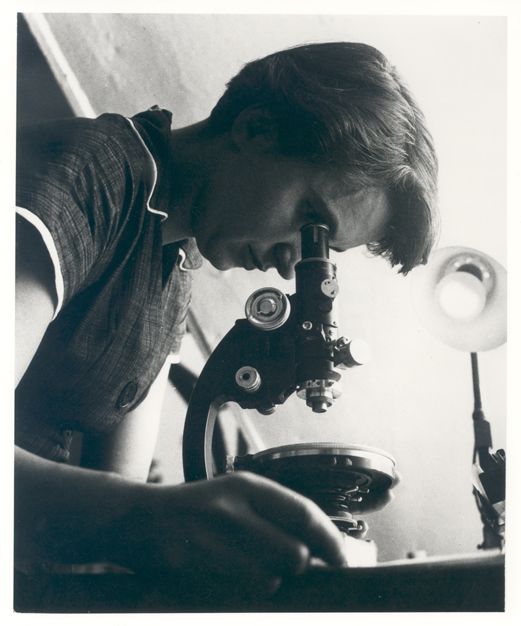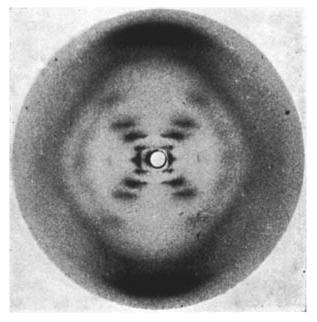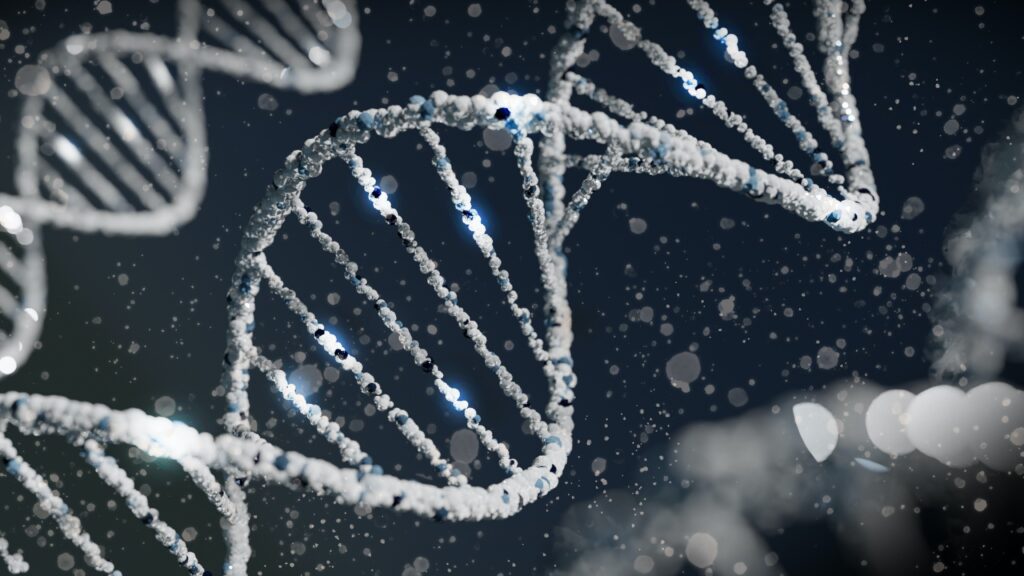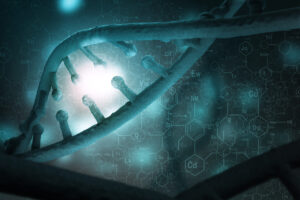The female scientist who unveiled the secret of life!
How sad is it that one of the most important scientific discoveries of a century rests on deception, misconduct and prejudice? And that for decades the female scientist who unveiled the secret of life was denied her hall of fame?
It was Jan. 30, 1953 when “Photograph 51” was shared without the consent or knowledge of the owner providing the missing piece to discover the molecular structure of the Deoxyribonucleic acid (DNA).
This act signed one of the important moments in the history of science.
But it is never too late to right the wrongs, or is it?
In the beginning there was a female scientist in a laboratory
Rosalind Franklin was a brilliant English chemist who loved science at times when girls where not encouraged to pursue such careers. At an early age, she discovered her passion for science and Latin. She was a sportive and active child.
Born in 1920 to a wealthy Jewish family who believed in education and public service, she enrolled at the University of Cambridge when she was 18 years old. She studied physical chemistry at Newnham Women’s College.
World War II got in the way of her fellowship in Cambridge. Franklin started to serve as London air raid warden. She was the woman whose main task it was to protect people during air raids, when enemy planes were dropping bombs.
Rosalind decided to give up her fellowship in Cambridge and rather continue serving her country in those difficult times. So, she started to work for the British Coal Utilization Research Association, focusing her research on coal.
But all was not lost! She studied carbon and coal, not only helping her country during the war but also allowing her to write a doctoral thesis. She obtained a PhD degree when she was only 25 years old.
Science and everyday life cannot be separated!
Franklin was an attractive, capable woman with a passionate nature. She was an intrepid traveler and fearless hiker. Her friends described her as kindhearted woman and brilliant scientist. And like all great minds, she loved to engage in spirited discussion, both in science and in politics.
She did not hesitate to serve her country, but she was never giving up her true love for science.
“Science and everyday life cannot and should not be separated. Science, for me, gives a partial explanation of life. In so far as it goes, it is based on fact, experience and experiment”, she wrote in a letter to her father.

Unveiling the secret of life
She perfected her skills in X-ray crystallography in Paris where she lived for four years before returning to London, accepting a position at King’s College. And it was indeed thanks to this experimental work on crystal structure that Franklin managed to unveil the secret of life. She understood that the DNA molecule existed in a helical conformation!
Until then, scientists – including Watson and Crick – were struggling to understand the molecular structure of the DNA. The molecule that carries all genetic information for the development and functioning of any living organism. The molecule that contains the secret of life.

Photograph 51
Can we fairly say that an image classified as “Photograph 51” is the most important photo ever taken?
Raymond Gosling, a graduate student under the supervision of Rosalind Franklin, took the X-ray image of a gel composed of DNA fiber. This photo provided the missing key information to develop a realistic model of the DNA.
A misunderstanding between her and her colleague Maurice Wilkins resulted in frictions and clashes between the two scientists that made collaboration impossible. This was not an issue for Franklin, but it was for Wilkins.
The story goes that they had very strong personalities and apparently it was not easy for them to work together. The two should have worked together to elucidate the structure of DNA.
Alas, that did not happen! What happened was that – without Franklin’s knowledge or consent – Wilkins showed “photograph 51” to Watson, who also worked on DNA (together with Francis Crick) and was struggling to come up with a model that would actually explain its structure.
The diffraction pattern shown in the photo was compatible with a helix structure. And this undoubtedly inspired Watson to come up with the 3D structure of DNA that would finally make sense. He and Crick then suggested the now famous DNA model.

The wronged heroine
When all this was happening, Franklin decided to leave King’s College and moved to the Crystallography Laboratory at Birkbeck College. She chose to leave as soon as possible rather than fully complete her work on DNA.
At King’s College, she was unhappy. Not so much because of her gender, being a female scientist in a rather male-dominated environment, but because of her class and religion. She was a wealthy Anglo-Jew in an institution considered a setting for the Church of England.
But Rosalind proved to be the better woman. In her 1953 “Nature” paper, she acknowledged that her “general ideas” were consistent with Watson’s and Crick’s DNA model. Not knowing (or complaining) that they had been using her data to come up with that final model.
Reading the original paper by Watson and Crick, we could argue that it does fail in many respects. Uncommon for a scientific paper published in “Nature”, it is based on pure speculation lacking any actual experimental support for their conclusions.
But do you know what was really disgraceful and condamnable? The two fellows writing the paper did not cite Rosalind Franklin’s contribution to their work. They pretended to have come up with the final structure thanks to their own brilliance and scientific minds.
Rosy did not directly give her data
Was it negligence, premeditation or misogyny? Of course, it was premeditation with a touch of misogyny! The two scientists thought that it was acceptable to ignore Franklin’s contribution just because nobody knew they accessed her image and more of her own data! After all she was just a woman or, even worse, a Jewish woman.
Apparently, Watson seemed to have had an intense dislike for Africans, African Americans, Asians, and Eastern European Jews. He admitted many years later that he had not been honorable with regards to Rosalind Franklin, as Howard Markel tells us in his book “The Secret of Life”.
But Watson was not disturbed by his own behavior. In his 1968 book “The double helix” he wrote “Rosy, of course, did not directly give us her data. For that matter, no one at King’s realized they were in our hands.”
That book contains many other regrettable comments. Proving that “the men” intentionally ignored Franklin.
As early as 1953 Crick admitted that they were stuck in solving the DNA structure. And that they “needed a clue and the clue was Rosalind Franklin’s data”.
Unveiling the DNA structure still remains one of the greatest discoveries of the past century. But the outrageous misconduct of three men, who were recognized for it, will forever be tainted it.
Without Rosalind Franklin’s contribution who knows how long it would have taken to reach the same conclusion.

Unhappy ending
Alas the wrongdoing did not end with that. The three fellow scientists, Watson, Crick, and Wilkins, received the most important recognition in science, the 1962 Nobel Prize for Physiology or Medicine, specifically for their discovery of the molecular structure of DNA.
Franklin died of cancer in 1958, four years before the Nobel Prize. At that moment, she had several publications, four of which were in Nature. She was well known in the international scientific community for her research of coals, carbons and viruses.
Even the Nobel Committee failed to mention her contribution to the discovery of DNA structure!
It is fair to assume that she would have not shared the prize, had she still been alive. Once again, the highest authority sanctioned and approved the wrongdoing of her fellow male scientists.
Rosalind Franklin proved to be a brilliant scientist simply in love with science. In her new job at Birkbeck College, she completed her work on DNA and coal.
She started a new project to study the molecular structure of the tobacco mosaic virus, responsible for “mosaic”-like mottling and discoloration on tobacco leaves, a problem with high economic impact.
Despite everything that had happened to her, she always followed her passion for science and focused on complex problems with high societal impact.







1 Response
[…] when talking about great discoveries in biology, let’s mention Rosalind Franklin before Watson and […]